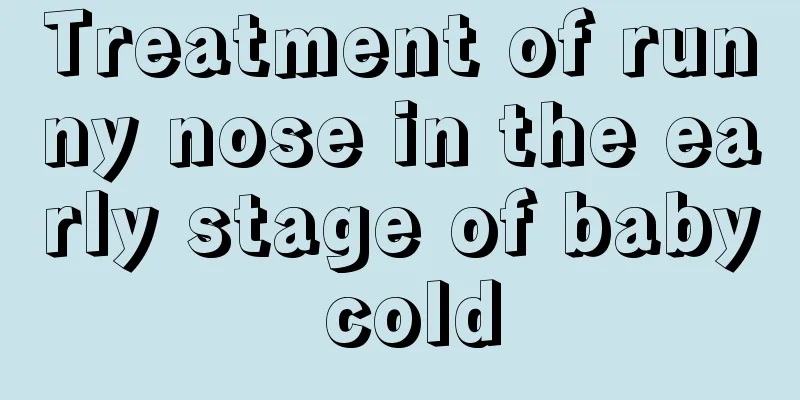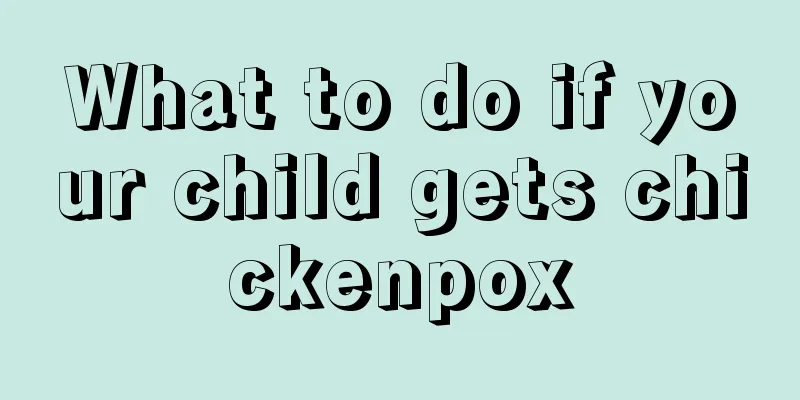How to clean baby's stool

|
If infants and young children have bad bowel movements and their buttocks are always sticky, they must be cleaned with warm water. Do not use too cold water, as this will cause them to catch a cold. If they are not cleaned thoroughly, they may get some bacterial infections. If you find that their diarrhea becomes more serious, you should take some improving medication to prevent them from dehydration. Principles: prevent dehydration, correct dehydration, continue diet, and use medication appropriately 1. Diet therapy Continue with the original diet, which should be light and easily digestible, and reduce the amount of supplementary food appropriately. If lactose intolerance or allergic diarrhea exists, lactose-free milk powder and deeply hydrolyzed or free amino acid milk powder should be used instead. 2. Fluid therapy (1) The oral method is suitable for patients with mild to moderate dehydration or mild vomiting. (2) Intravenous rehydration is used for moderate and severe dehydration. 3. Infection Control According to the cause of the disease, choose antibacterial drugs rationally. 4. Symptomatic treatment Diarrhea can be treated by taking montmorillonite powder orally. To aid digestion, you can take pepsin mixture or multi-enzyme tablets orally. Treat symptomatically according to the condition. Hypokalemia often occurs after watery diarrhea for more than one week, and it occurs earlier and is more severe in those with pre-existing malnutrition. Generally, children rarely have symptoms of hypokalemia before infusion. After infusion of potassium-free fluids, as dehydration and acidosis are corrected, symptoms of hypokalemia gradually appear: mental depression, low muscle tension, and dull first heart sound. If the condition is more serious, abdominal distension, weakened or absent bowel sounds, and weakened tendon reflexes may occur. If potassium is not supplemented in time, severe hypokalemia may cause muscle paralysis or even respiratory muscle paralysis, intestinal paralysis, bladder paralysis, disappearance of tendon reflexes, slow heart rate, arrhythmia, systolic murmur at the apex, and heart enlargement, which can be life-threatening. Symptoms of hypokalemia often occur when blood potassium is below 3.5mmol/L. Children with dehydration lose weight quickly, become listless, have pale or even gray skin with poor elasticity, sunken anterior fontanelle and eye sockets, dry mucous membranes, a sunken abdomen, a weak pulse, low blood pressure and decreased urine output. Dehydration is divided into three degrees: mild, moderate and severe: ① Mild dehydration means fluid loss accounts for less than 5% of body weight. The child is in slightly worse spirits, has a slightly pale complexion, slightly dry skin but good elasticity, slightly sunken eye sockets, and urinates slightly less than usual; ② Moderate dehydration: fluid loss accounts for about 5% to 10% of body weight. The child is listless and irritable, and his skin is pale, gray, dry, loose, and has poor elasticity. It cannot be flattened immediately after being pinched. Bluishness around the mouth, obvious sunken anterior fontanelle and eye sockets, dry lips and mucous membranes, dull heart sounds, concave abdomen, cold limbs, and significantly reduced urination; Severe dehydration means fluid loss of 10% to 15% of body weight. The child is listless and indifferent, has no reaction to the surrounding environment, has pale skin, has very poor elasticity, and does not flatten easily after being pinched. The anterior fontanelle and eye sockets are sunken, the eyes cannot close, the conjunctiva is dry, there are no tears when crying, the cornea is dull, the lips are cyanotic, the mucous membranes are dry and unclear, the heart rate is fast, and blood pressure is difficult to measure. The abdomen is deep. Cold limbs. Little or no urine. |
<<: What to do if your child coughs but has no phlegm
>>: How to make baby beef puree
Recommend
What are the symptoms of mild encephalitis in children?
Encephalitis is a disease that people are very af...
Baby limb convulsions
When the baby has convulsions in the limbs, paren...
How to educate a willful baby?
In daily life, appropriate praise of children can...
What is the standard height and weight for a 21-month-old baby?
From the birth of their children, parents have be...
Causes of recurrent urticaria in children
Rubella is a common disease among children and al...
What are the dangers of swimming for newborns?
Today's parents like to let their newborns sw...
What to do if your baby has tonsillitis and cough
Nowadays, many babies have symptoms of tonsilliti...
What are the psychological characteristics of 10-year-old children?
When children are around ten years old, they are ...
What should I do if a boy has a nosebleed?
For boys with bleeding, we must pay attention to ...
What to do if baby's tsh is too high
Tsh is a value that appears when checking the fet...
What's wrong with the white spots on the child's face?
White spots are not unfamiliar to many people. Th...
How to take care of a child with foreskin that is too long?
When many parents find that their children’s fore...
Beware of the eight common misunderstandings in neonatal care
1. Sleep with the lights on Turn off the lights a...
What are the dangers of weaning a 2-year-old baby?
We all know that when our baby is about 8 to 10 m...
Can children practice yoga?
Today's scientific and technological levels a...









